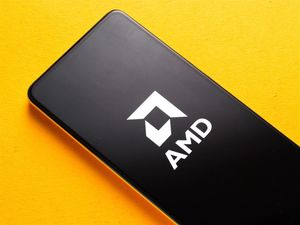The landscape of digital content creation is undergoing a seismic shift with the latest breakthroughs in generative artificial intelligence, particularly in the realm of video generation. Pioneering models such as OpenAI's (PRIVATE: OPENAI) Sora and Google's (NASDAQ: GOOGL) Veo and V2A technology are not merely incremental improvements; they represent a fundamental redefinition of how visual narratives are conceived, produced, and consumed. These advancements promise to democratize high-quality video production, enabling creators to conjure complex, realistic scenes from simple text prompts, and even imbue silent footage with synchronized, lifelike audio.
The immediate implications of these innovations are profound, signaling a future where the barriers to entry for sophisticated video content are dramatically lowered. From independent filmmakers to global marketing agencies, the ability to rapidly prototype, iterate, and finalize video content with unprecedented efficiency is set to revolutionize workflows and unlock new creative possibilities. This technological leap is poised to reshape industries, challenge traditional production paradigms, and ignite a new era of digital storytelling.
A New Era of Visual Storytelling: Unpacking the Generative Video Revolution
The recent unveiling and ongoing development of advanced generative AI video models mark a pivotal moment in the evolution of artificial intelligence. At the forefront of this revolution are OpenAI's Sora and Google's suite of video and audio generation technologies, including Veo and V2A. These models are not just generating video; they are demonstrating an astonishing comprehension of real-world physics, nuanced human movement, and the intricate details of complex scenes, all from simple textual or visual inputs.
OpenAI's Sora, though not yet publicly available, has captivated the industry with its ability to produce realistic and imaginative videos up to 60 seconds long from text prompts. Its remarkable capacity to interpret language accurately allows it to generate intricate scenes with multiple characters, specific motions, and precise details of subjects and backgrounds. A standout feature is Sora's capability to extend generated videos both forward and backward in time, and even create seamless infinite loops, offering unprecedented flexibility in narrative construction. OpenAI is currently engaging in rigorous "red teaming" to identify potential harms and is developing robust tools, including detection classifiers and C2PA metadata, to ensure the responsible deployment of AI-generated content.
Google has countered with its own formidable offerings, notably the Veo series and the innovative V2A technology. Google's (NASDAQ: GOOGL) Veo 2 generates high-quality videos with enhanced realism and an understanding of cinematography, capable of producing resolutions up to 4K and extending to minutes in length. It excels in grasping real-world physics and the subtleties of human movement and expression, and incorporates an invisible SynthID watermark for content identification. The latest iteration, Veo 3, represents a significant leap, producing 1080p HD to 4K videos directly from natural language prompts, now with synchronized native audio. This means Veo 3 can generate dialogue, ambient sounds, and background music that are perfectly synchronized with the video, creating coherent and immersive scenes. Furthermore, Veo 3 introduces a feature allowing users to create animations by drawing visual instructions directly on the first frame, offering precise animation control without complex text prompts. Complementing Veo is Google's (NASDAQ: GOOGL) V2A (Video-to-Audio) technology, an AI-driven solution that generates rich, synchronized audio for video content. By analyzing video pixels and leveraging natural language text prompts, V2A creates soundtracks—including sound effects, music, and dialogue—that perfectly align with on-screen actions, addressing the common limitation of many video generation models that produce silent footage.
The timeline leading up to these breakthroughs has been a rapid acceleration of AI research, building upon foundational models in natural language processing and image generation. Key players include the research divisions of tech giants like Google (NASDAQ: GOOGL) and Microsoft (NASDAQ: MSFT), as well as specialized AI labs such as OpenAI (PRIVATE: N/A) and Stability AI (PRIVATE: N/A). Initial market reactions have been a mix of awe, excitement, and cautious apprehension, with content creators, filmmakers, and marketers eagerly anticipating the tools while also grappling with the ethical and practical implications.
The Shifting Sands: Winners and Losers in the AI Video Era
The advent of sophisticated generative AI video models like Sora, Veo, and V2A is poised to create a new hierarchy of winners and losers across various industries, fundamentally altering competitive landscapes and business models.
Potential Winners:
- Content Creators and Independent Filmmakers: These individuals and small studios stand to gain immensely. The democratization of high-quality video production means they can produce professional-grade content without the need for extensive budgets, large crews, or specialized equipment. This levels the playing field, allowing for greater creative freedom and the rapid prototyping of ideas. Platforms like YouTube (NASDAQ: GOOGL) and TikTok (PRIVATE: N/A) could see an explosion of diverse and high-quality user-generated content.
- Marketing and Advertising Agencies: The ability to generate personalized and highly engaging video advertisements at scale will be a game-changer. Agencies can quickly create multiple versions of ads tailored to specific demographics, test different creative concepts, and significantly reduce production costs and timelines. Companies like Meta Platforms (NASDAQ: META) and Alphabet (NASDAQ: GOOGL), which rely heavily on digital advertising, could see increased demand for their ad platforms as content creation becomes more accessible.
- Gaming and Virtual Reality Companies: Generative AI can revolutionize game development by rapidly creating dynamic environments, realistic characters, and interactive narratives. Companies like Epic Games (PRIVATE: N/A) and Roblox (NYSE: RBLX) could leverage these tools to build more immersive and expansive virtual worlds with unprecedented efficiency.
- EdTech Companies: The creation of engaging and interactive educational content, simulations, and personalized learning experiences will become more accessible and cost-effective. Companies like Coursera (NYSE: COUR) and Chegg (NYSE: CHGG) could integrate AI-generated video to enhance their offerings.
- Cloud Computing Providers: The immense computational power required to train and run these sophisticated AI models will drive demand for cloud services. Amazon Web Services (NASDAQ: AMZN), Microsoft Azure (NASDAQ: MSFT), and Google Cloud (NASDAQ: GOOGL) are well-positioned to benefit from this increased demand.
Potential Losers (or those facing significant disruption):
- Traditional Production Houses and VFX Studios: While these entities possess invaluable expertise, their traditional business models, which rely on large crews, extensive equipment, and lengthy production cycles, may face significant pressure. They will need to rapidly adapt by integrating AI tools into their workflows or risk being outcompeted on cost and speed. Companies like Industrial Light & Magic (PRIVATE: N/A) or Weta Digital (PRIVATE: N/A) will need to pivot their strategies.
- Stock Footage and Music Libraries: As AI models become capable of generating bespoke video and audio content, the demand for generic stock assets may diminish. Companies like Shutterstock (NYSE: SSTK) and Getty Images (NYSE: GETY) will need to explore new revenue streams, potentially by licensing their existing content for AI training or offering AI-powered generation tools themselves.
- Entry-Level Production Roles: Tasks such as basic video editing, sound design, and animation, which are often performed by junior professionals, could be significantly automated. This may lead to a shift in job requirements, emphasizing AI prompting, oversight, and creative direction over manual execution.
- Intellectual Property Holders: The ease of generating new content also raises significant concerns about copyright infringement and the unauthorized use of existing intellectual property for training AI models. Legal battles and new regulatory frameworks are likely to emerge, impacting companies that rely heavily on IP protection.
Ultimately, the companies that embrace and strategically integrate generative AI into their core operations, rather than resisting it, will be the ones that thrive in this evolving landscape. Adaptation, innovation, and a focus on higher-level creative and strategic tasks will be crucial for navigating this transformative period.
Industry Impact and Broader Implications: A Paradigm Shift
The emergence of advanced generative AI video models like Sora, Veo, and V2A is not merely a technological upgrade; it represents a paradigm shift with far-reaching implications across industries, extending beyond the immediate realm of content creation. This event fits squarely into the broader trend of AI-driven automation and augmentation, pushing the boundaries of what machines can create and understand.
One of the most significant ripple effects will be on competitors and partners within the media and entertainment ecosystem. Traditional film studios, animation houses, and advertising agencies will face immense pressure to integrate these tools or risk becoming obsolete. Companies that develop complementary AI tools, such as those for AI-driven scriptwriting, storyboarding, or character design, will find new opportunities for partnership and integration. The competitive landscape will intensify as smaller, agile AI-first startups challenge established players with their ability to produce high-quality content at a fraction of the cost and time. This could lead to a wave of mergers and acquisitions as larger entities seek to acquire AI capabilities.
Regulatory and policy implications are already a major concern. The ability to generate highly realistic "deepfakes" raises serious questions about misinformation, propaganda, and identity theft. Governments and international bodies are grappling with how to regulate AI-generated content, with discussions around mandatory watermarking, content provenance tracking (like C2PA metadata), and legal frameworks for accountability. Intellectual property rights are another contentious area, as the training of these models often involves vast datasets of copyrighted material, leading to debates over fair use and compensation for creators. The ethical use of AI, including bias in generated content and the potential for misuse, will necessitate robust policy responses and industry self-regulation.
Historically, this moment can be compared to the advent of digital video editing, computer-generated imagery (CGI), or even the printing press. Each of these innovations democratized creation, lowered production costs, and fundamentally altered the media landscape. Just as desktop publishing empowered individuals to create professional-looking documents, generative AI video empowers individuals and small teams to produce cinematic-quality video. The key difference now is the speed and scale at which this transformation is occurring, driven by the exponential growth in computational power and AI model sophistication. The shift from manual, labor-intensive processes to AI-driven automation is accelerating, forcing industries to adapt at an unprecedented pace. This also echoes the early days of the internet, where new business models emerged rapidly, and traditional industries had to quickly pivot to digital strategies.
What Comes Next: Navigating the AI-Powered Future of Video
The immediate future will see a rapid integration of generative AI video models into existing creative workflows. Short-term possibilities include widespread adoption for rapid prototyping in advertising, pre-visualization in filmmaking, and the creation of personalized marketing content. We can expect to see a surge in "AI-assisted" content, where human creativity is augmented by AI tools for efficiency and scale.
In the long term, the possibilities are even more transformative. We may witness the emergence of entirely new forms of entertainment, such as interactive narratives where viewers influence the story in real-time, or hyper-personalized content streams tailored to individual preferences. The concept of a "virtual studio" could become a reality, where entire productions, from script to final cut, are managed and executed primarily by AI, with human oversight. This could lead to a significant reduction in production costs, making high-quality video accessible to an even broader range of creators and businesses.
Potential strategic pivots or adaptations required for companies will be multifaceted. Traditional media companies must invest heavily in AI research and development, or partner with leading AI firms, to integrate these technologies into their core operations. This includes retraining their workforce to become proficient in AI prompting, oversight, and ethical considerations. Software companies providing creative tools, such as Adobe (NASDAQ: ADBE) and Autodesk (NASDAQ: ADSK), will need to rapidly incorporate generative AI capabilities into their suites to remain competitive.
Market opportunities will emerge in specialized AI services, such as AI content auditing, ethical AI consulting, and the development of niche AI models for specific industries (e.g., medical visualization, architectural walkthroughs). Challenges will include managing the ethical implications of deepfakes and misinformation, navigating complex intellectual property issues, and addressing potential job displacement in certain creative roles. The need for robust AI governance and regulatory frameworks will become paramount to ensure responsible innovation.
Potential scenarios and outcomes range from a highly democratized content landscape where anyone can be a filmmaker, to a more centralized model where a few dominant AI platforms control the means of production. The most likely outcome is a hybrid approach, where AI serves as a powerful co-creator, empowering human artists and storytellers to achieve their visions with unprecedented efficiency and scale. Investors should watch for companies that demonstrate a clear strategy for integrating AI, a strong commitment to ethical development, and the ability to adapt their business models to this rapidly evolving technological frontier.
Conclusion: The Unfolding Chapter of Generative Video
The breakthroughs in generative AI video models, spearheaded by OpenAI's (PRIVATE: N/A) Sora and Google's (NASDAQ: GOOGL) Veo and V2A technology, mark a pivotal moment in the history of content creation. These innovations are not merely incremental advancements; they represent a fundamental shift in how visual and auditory narratives are conceived, produced, and consumed. The ability to generate realistic, complex, and synchronized video and audio from simple prompts democratizes high-quality production, lowers barriers to entry, and unlocks unprecedented creative possibilities across industries.
The immediate impact is already being felt, with content creators, marketers, and educators poised to leverage these tools for rapid prototyping, personalized content at scale, and streamlined workflows. While traditional production houses and certain entry-level roles may face disruption, the overall trend points towards an augmentation of human creativity, fostering new roles focused on AI prompting, oversight, and strategic direction. The broader implications extend to significant regulatory challenges concerning misinformation, intellectual property, and ethical AI use, necessitating robust policy responses and industry collaboration.
Moving forward, the market will be characterized by rapid integration of AI into existing creative tools, the emergence of entirely new forms of entertainment, and a continuous push for more sophisticated and nuanced AI models. Companies that strategically embrace and invest in AI, prioritize ethical development, and adapt their business models will be the ones to thrive. Investors should closely monitor the development of AI governance frameworks, the evolution of intellectual property laws, and the strategic pivots of major players in the media, entertainment, and technology sectors. The lasting impact of these generative AI video models will be a more dynamic, accessible, and creatively expansive digital landscape, forever changing how we tell stories and experience the world through video.





